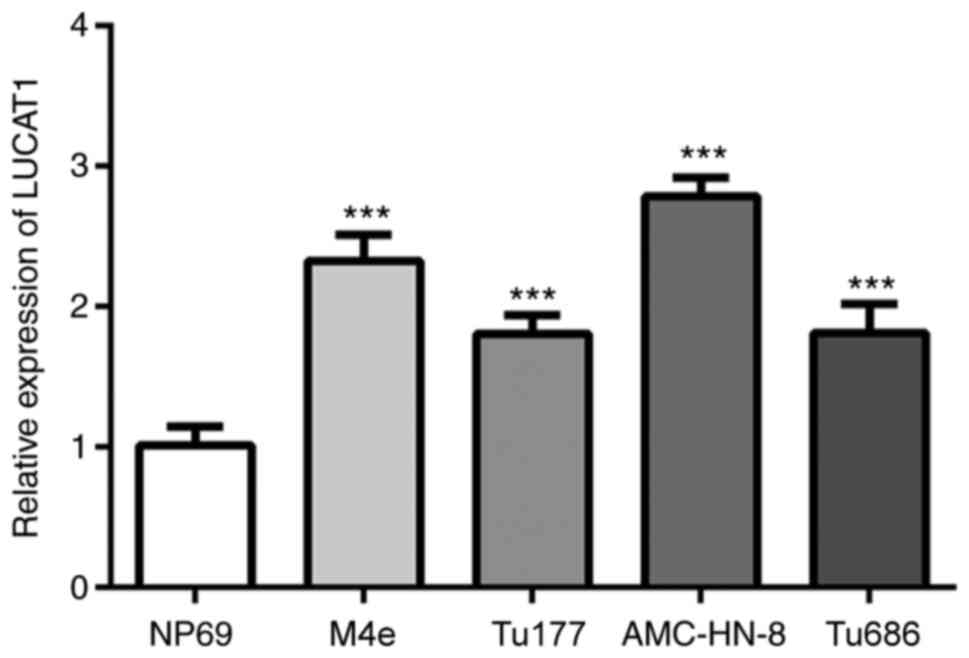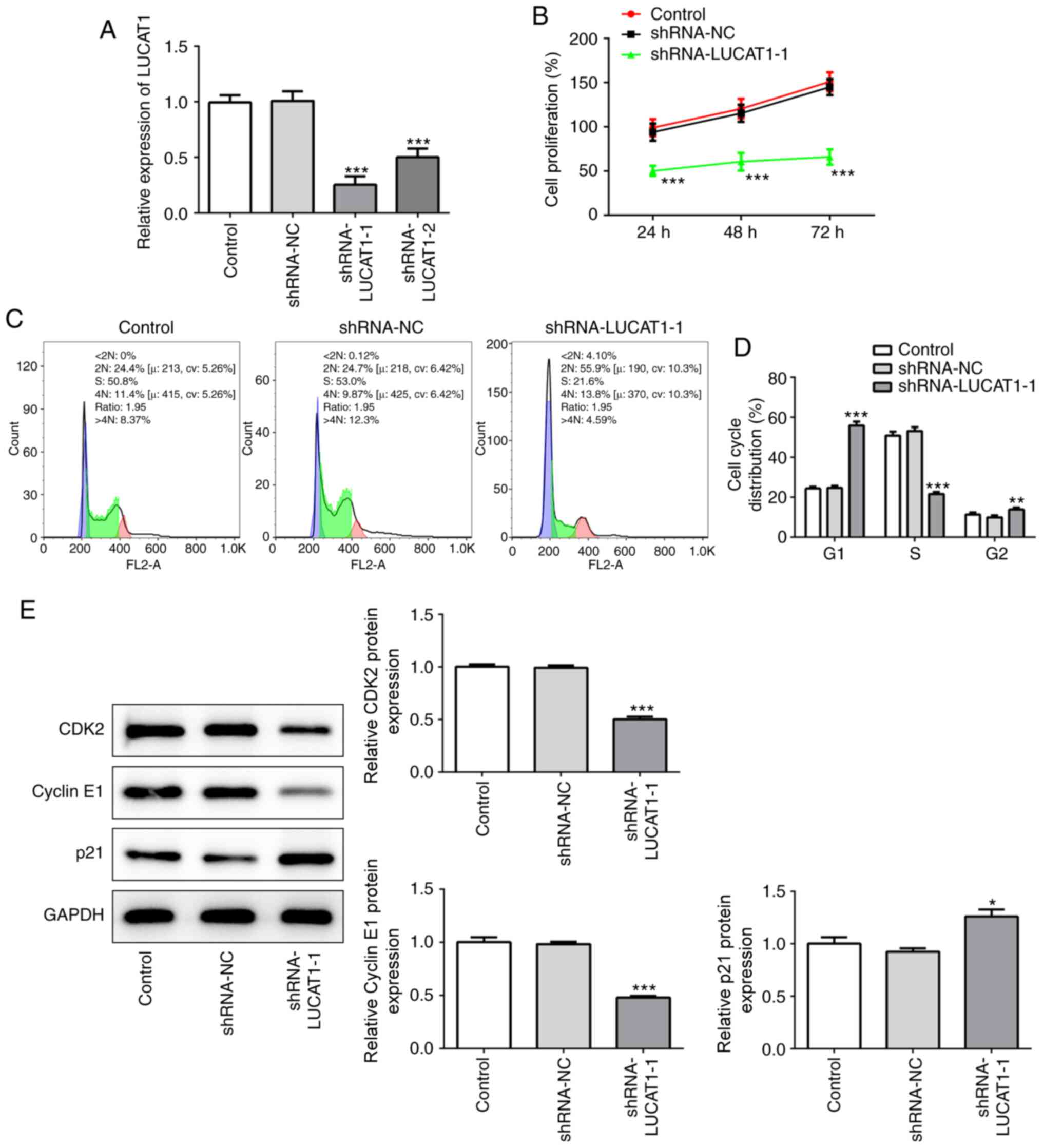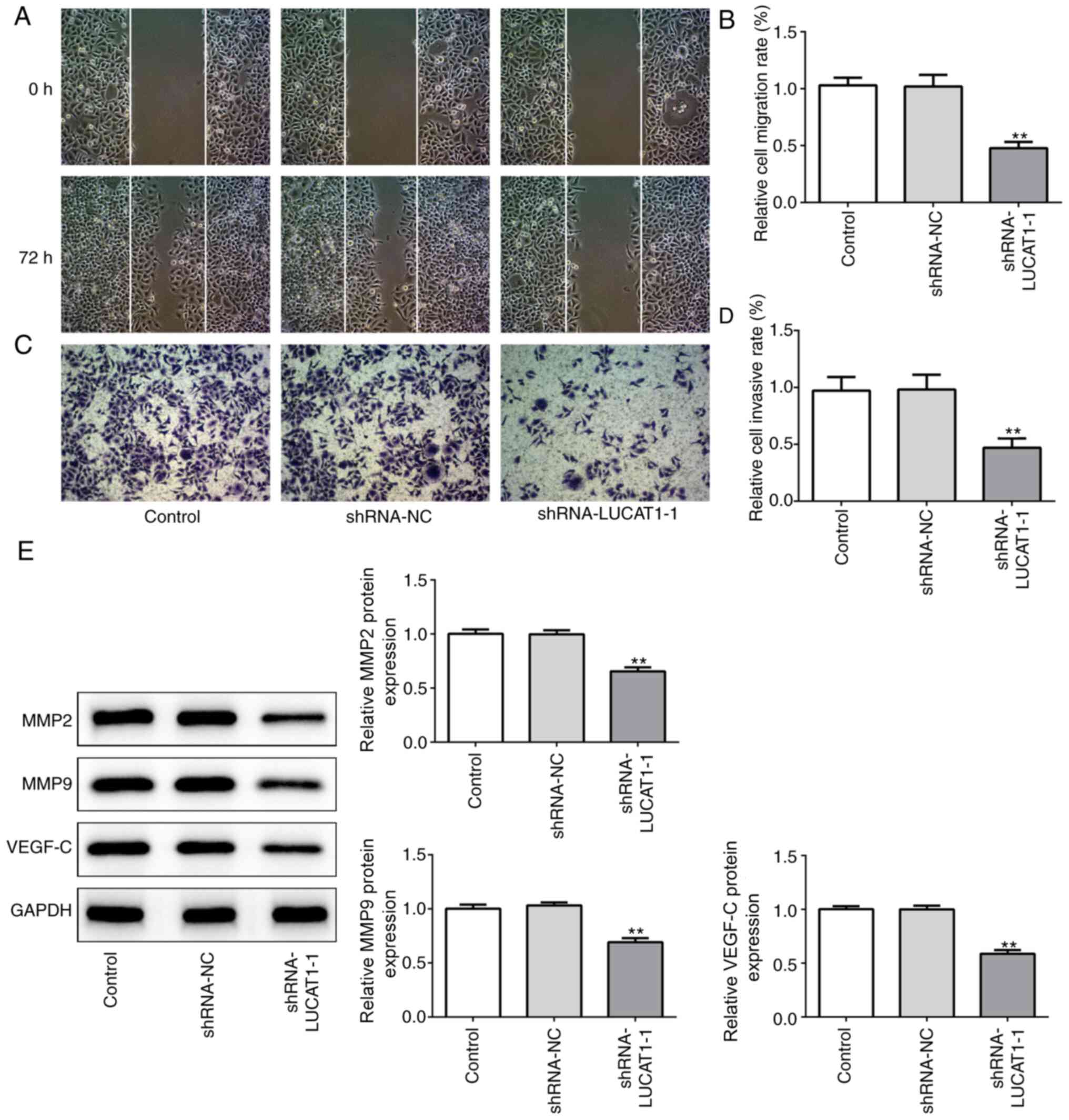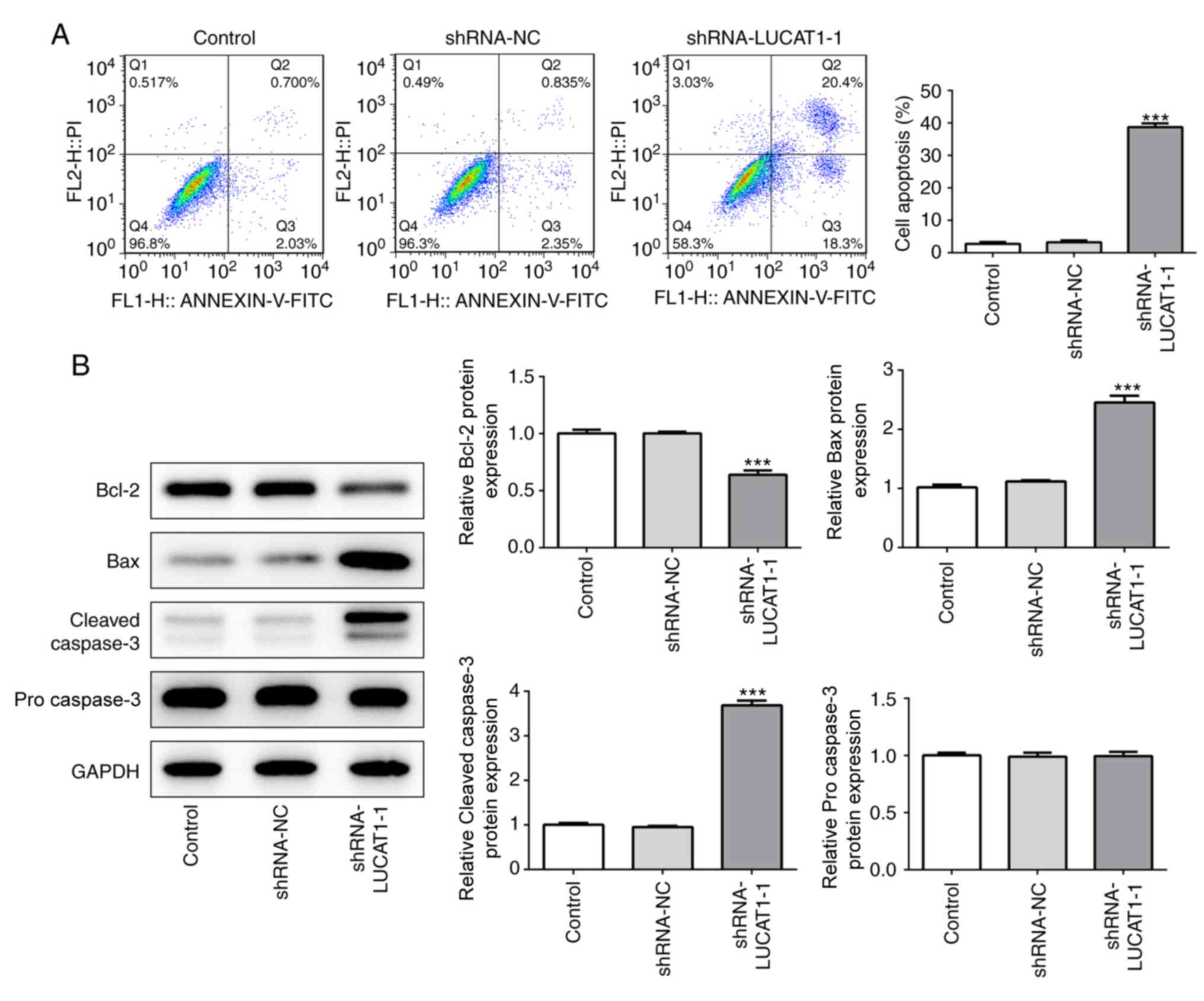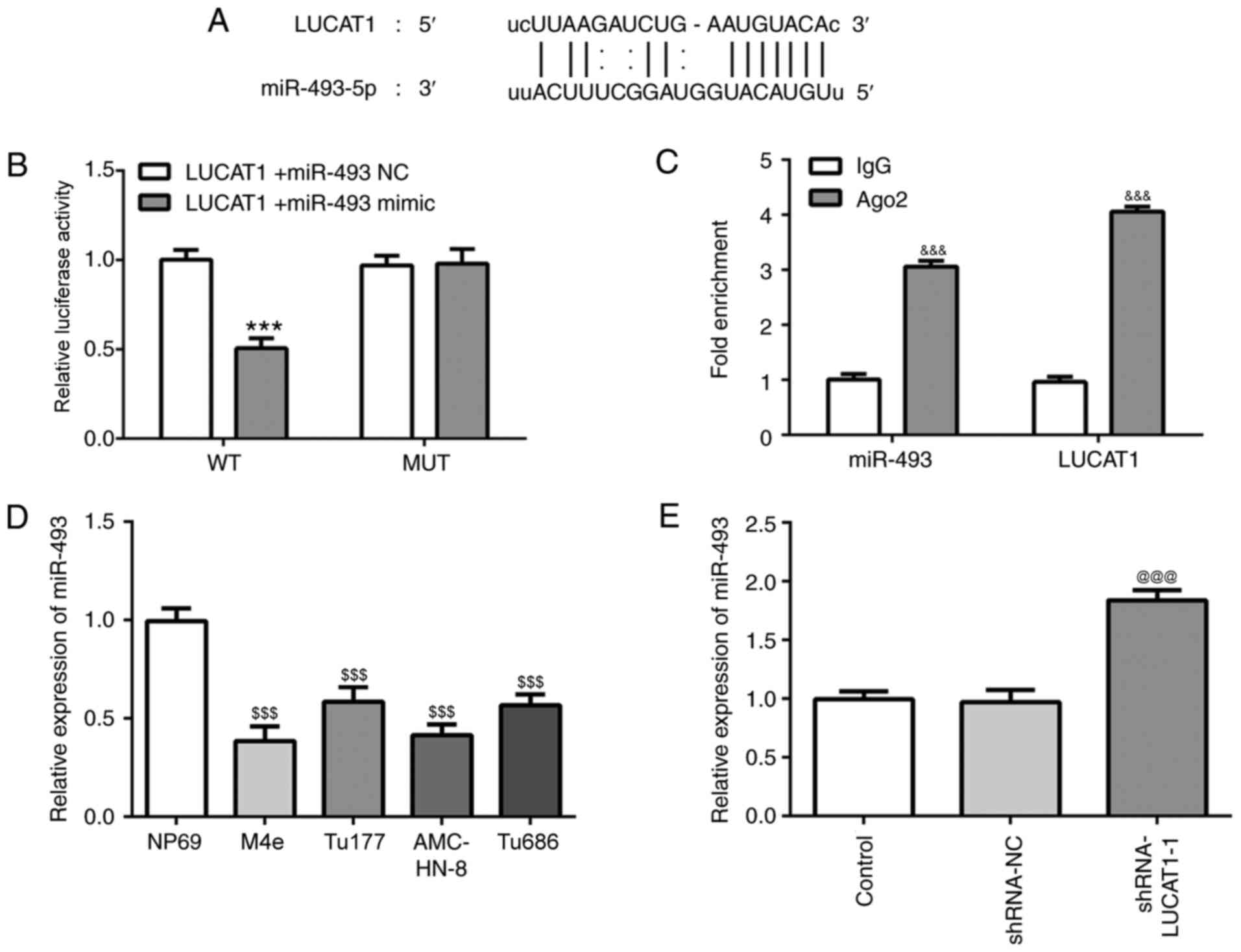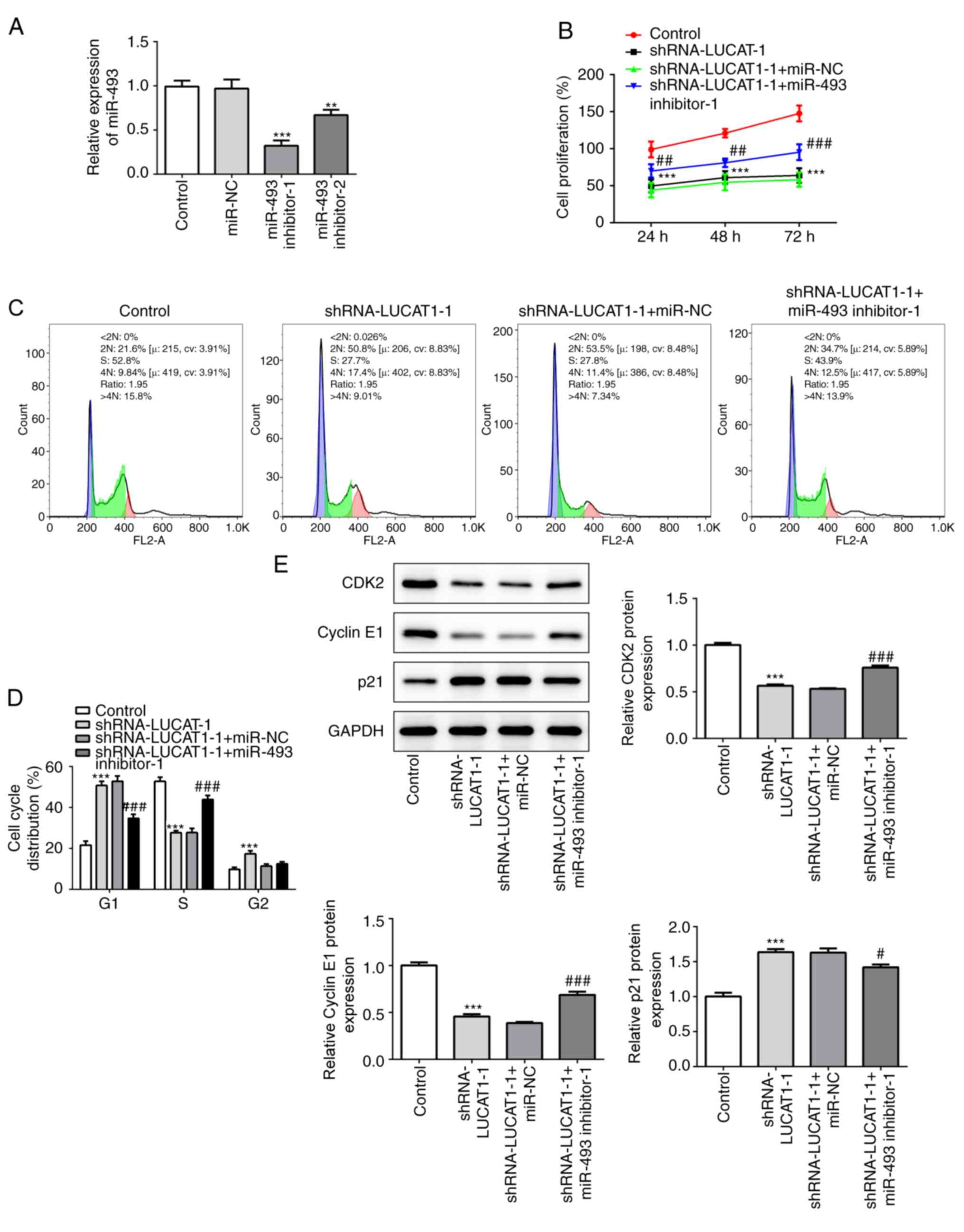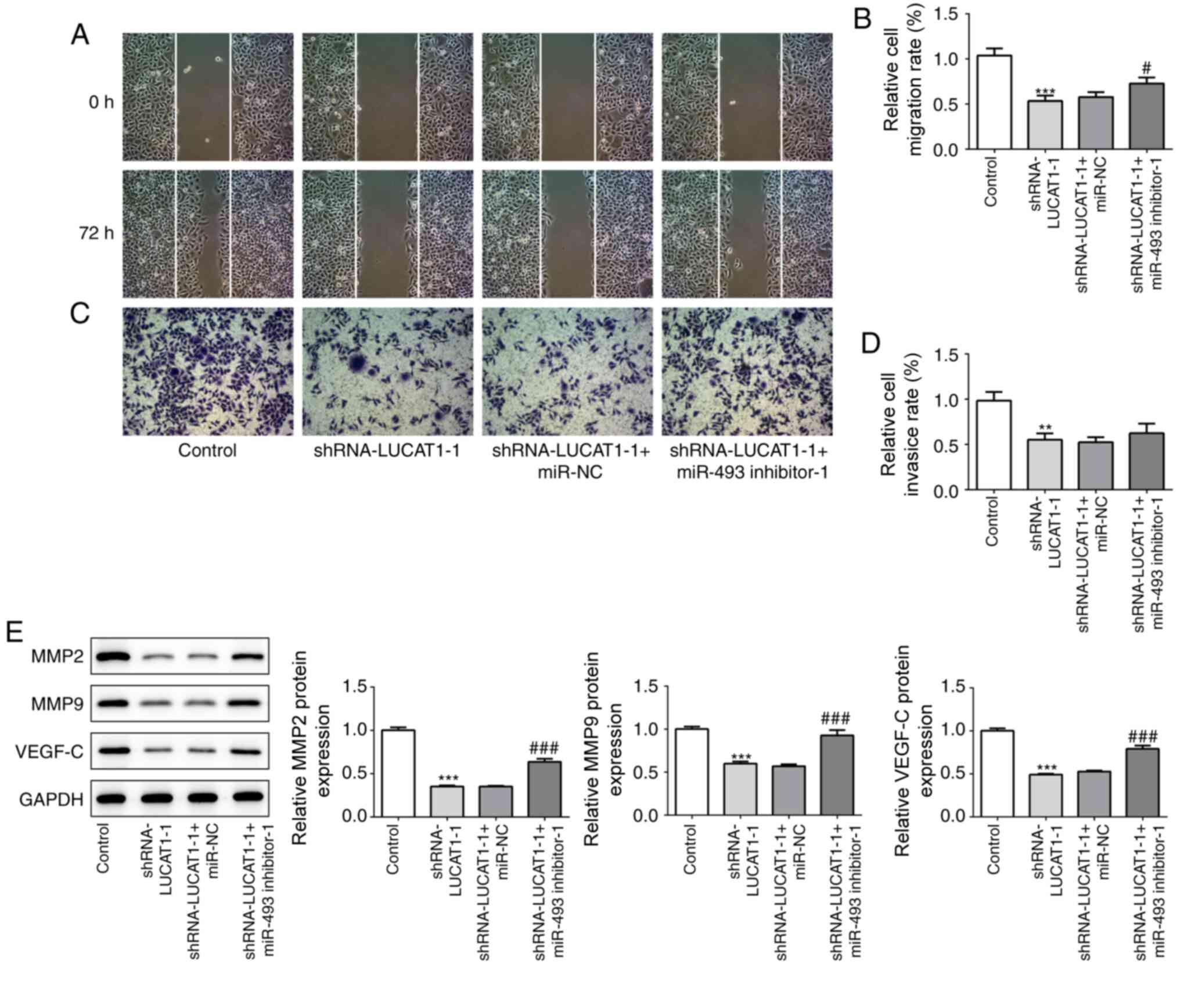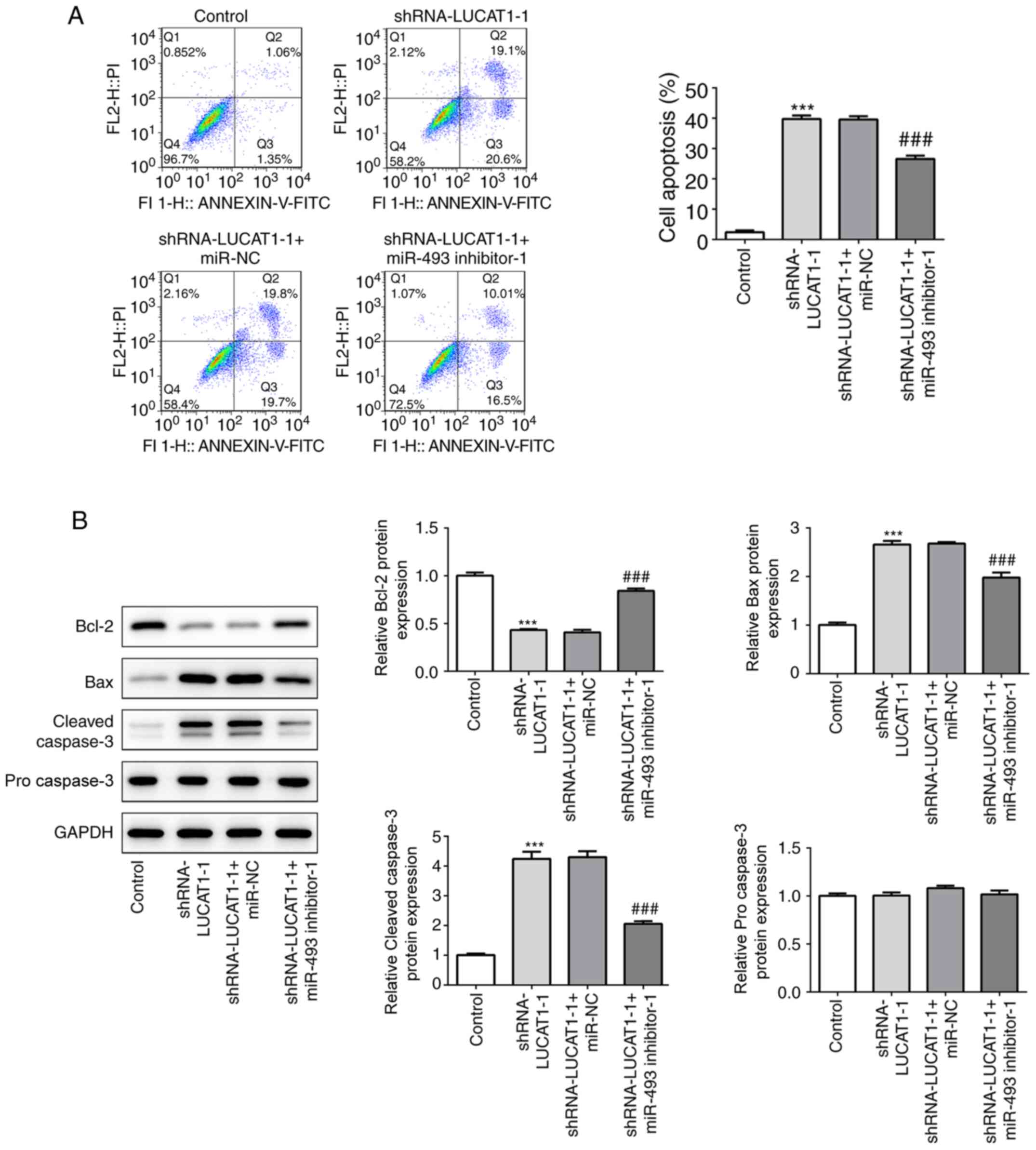|
1
|
Pinette A, McMichael E, Courtney NB,
Duggan M, Benner BN, Choueiry F, Yu L, Abood D, Mace TA and Carson
WE 3rd: An IL-15-based superagonist ALT-803 enhances the NK cell
response to cetuximab-treated squamous cell carcinoma of the head
and neck. Cancer Immunol Immunother. 68:1379–1389. 2019. View Article : Google Scholar : PubMed/NCBI
|
|
2
|
Gao P, Gong L and Wang X: Induction
chemotherapy in patients with resectable laryngeal cancer: A
meta-analysis. Mol Clin Oncol. 9:155–162. 2018.PubMed/NCBI
|
|
3
|
Yang JQ, Liang Z, Wu M, Sun YM and Liu HX:
Expression of p27 and PTEN and clinical characteristics in early
laryngeal squamous cell carcinoma and their correlation with
recurrence. Int J Clin Exp Pathol. 8:5715–5720. 2015.PubMed/NCBI
|
|
4
|
Zheng Z, Tian R and Wang P: Roles of KAI1
and nm23 in lymphangiogenesis and lymph metastasis of laryngeal
squamous cell carcinoma. World J Surg Oncol. 15:2112017. View Article : Google Scholar : PubMed/NCBI
|
|
5
|
Vijay Parshuram R, Kumar R, Bhatt MLB,
Singh R, Parmar D, Gaur J, Kishan D, Saha M, Roopali, Katepogu P,
et al: To investigate the affiliation of XRCC-1 Gene Arg194Trp
polymorphism in alcohol and tobacco substance users and
loco-regionally progressed Laryngeal squamous cell carcinoma. J
Oral Biol Craniofac Res. 9:77–80. 2019. View Article : Google Scholar : PubMed/NCBI
|
|
6
|
Ma Z, Zhang H, Lian M, Yue C, Dong G, Jin
Y, Li R, Wan H, Wang R, Wang Y, et al: SLC7A11, a component of
cysteine/glutamate transporter, is a novel biomarker for the
diagnosis and prognosis in laryngeal squamous cell carcinoma. Oncol
Rep. 38:3019–3029. 2017. View Article : Google Scholar : PubMed/NCBI
|
|
7
|
He J, Zhou X, Li L and Han Z: Long
noncoding MAGI2-AS3 suppresses several cellular processes of lung
squamous cell carcinoma cells by regulating miR-374a/b-5p/CADM2
axis. Cancer Manag Res. 12:289–302. 2020. View Article : Google Scholar : PubMed/NCBI
|
|
8
|
Wu S, Ai H, Zhang K, Yun H and Xie F: Long
non-coding RNA EGOT promotes the malignant phenotypes of
hepatocellular carcinoma cells and increases the expression of
HMGA2 via down-regulating miR-33a-5p. Onco Targets Ther.
12:11623–11635. 2019. View Article : Google Scholar : PubMed/NCBI
|
|
9
|
Gao W, Qi CQ, Feng MG, Yang P, Liu L and
Sun SH: SOX2-induced upregulation of lncRNA LINC01561 promotes
non-small-cell lung carcinoma progression by sponging miR-760 to
modulate SHCBP1 expression. J Cell Physiol. 235:6684–6696. 2020.
View Article : Google Scholar : PubMed/NCBI
|
|
10
|
Thai P, Statt S, Chen CH, Liang E,
Campbell C and Wu R: Characterization of a novel long noncoding
RNA, SCAL1, induced by cigarette smoke and elevated in lung cancer
cell lines. Am J Respir Cell Mol Biol. 49:204–211. 2013. View Article : Google Scholar : PubMed/NCBI
|
|
11
|
Kong Y, Feng Y, Xiao YY, Liu SC, Li XG,
Yang QL, Chu WH and Liu JG: LncRNA LUCAT1 promotes rowth,
migration, and invasion of oral squamous cell carcinoma by
upregulating PCNA. Eur Rev Med Pharmacol Sci. 23:4770–4776.
2019.PubMed/NCBI
|
|
12
|
Li YL, Wang XM, Qiao GD, Zhang S, Wang J,
Cong YZ and Zhu SG: Up-regulated lnc-lung cancer associated
transcript 1 enhances cell migration and invasion in breast cancer
progression. Biochem Biophys Res Commun. 521:271–278. 2019.
View Article : Google Scholar : PubMed/NCBI
|
|
13
|
Zhou Q, Hou Z, Zuo S, Zhou X, Feng Y, Sun
Y and Yuan X: The long noncoding RNA LUCAT1 promotes CRC
tumorigenesis by targeting RPL40-MDM2-p53 pathway through binding
with UBA52. Cancer Sci. 110:1194–1207. 2019. View Article : Google Scholar : PubMed/NCBI
|
|
14
|
Luzón-Toro B, Fernández RM,
Martos-Martínez JM, Rubio-Manzanares-Dorado M, Antiñolo G and
Borrego S: LncRNA LUCAT1 as a novel prognostic biomarker for
patients with papillary thyroid cancer. Sci Rep. 9:143742019.
View Article : Google Scholar : PubMed/NCBI
|
|
15
|
Yu H, Xu Y, Zhang D and Liu G: Long
noncoding RNA LUCAT1 promotes malignancy of ovarian cancer through
regulation of miR-612/HOXA13 pathway. Biochem Biophys Res Commun.
503:2095–2100. 2018. View Article : Google Scholar : PubMed/NCBI
|
|
16
|
Dou X, Zhou Q, Wen M, Xu J, Zhu Y, Zhang S
and Xu X: Long noncoding RNA FOXD2-AS1 promotes the malignancy of
cervical cancer by sponging MicroRNA-760 and upregulating
hepatoma-derived growth factor. Front Pharmacol. 10:17002020.
View Article : Google Scholar : PubMed/NCBI
|
|
17
|
Mou E and Wang H: LncRNA LUCAT1
facilitates tumorigenesis and metastasis of triple-negative breast
cancer through modulating miR-5702. Biosci. Rep.
39:BSR201904892019.
|
|
18
|
Zheng A, Song X, Zhang L, Zhao L, Mao X,
Wei M and Jin F: Long non-coding RNA LUCAT1/miR-5582-3p/TCF7L2 axis
regulates breast cancer stemness via Wnt/β-catenin pathway. J Exp
Clin Cancer Res. 38:3052019. View Article : Google Scholar : PubMed/NCBI
|
|
19
|
Wang G, Fang X, Han M, Wang X and Huang Q:
MicroRNA-493-5p promotes apoptosis and suppresses proliferation and
invasion in liver cancer cells by targeting VAMP2. Int J Mol Med.
41:1740–1748. 2018.PubMed/NCBI
|
|
20
|
Yasukawa K, Liew LC, Hagiwara K,
Hironaka-Mitsuhashi A, Qin XY, Furutani Y, Tanaka Y, Nakagama H,
Kojima S, Kato T, et al: MicroRNA-493-5p-mediated repression of the
MYCN oncogene inhibits hepatic cancer cell growth and invasion.
Cancer Sci. 111:869–880. 2019. View Article : Google Scholar : PubMed/NCBI
|
|
21
|
Zhi D, Zhao X, Dong M and Yan C: miR-493
inhibits proliferation and invasion in pancreatic cancer cells and
inversely regulated hERG1 expression. Oncol Lett. 14:7398–7404.
2017.PubMed/NCBI
|
|
22
|
Liu C, Lu Z, Liu H, Zhuang S and Guo P:
LncRNA XIST promotes the progression of laryngeal squamous cell
carcinoma via sponging miR-125b-5p to modulate TRIB2. Biosci Rep.
40:BSR201931722020. View Article : Google Scholar : PubMed/NCBI
|
|
23
|
Li JH, Liu S, Zhou H, Qu LH and Yang JH:
starBase v2.0: Decoding miRNA-ceRNA, miRNA-ncRNA and protein-RNA
interaction networks from large-scale CLIP-Seq data. Nucleic Acids
Res. 42:D92–D97. 2014. View Article : Google Scholar : PubMed/NCBI
|
|
24
|
Livak KJ and Schmittgen TD: Analysis of
relative gene expression data using real-time quantitative PCR and
the 2(-Delta Delta C(T)) method. Methods. 25:402–408. 2001.
View Article : Google Scholar : PubMed/NCBI
|
|
25
|
Yao Z, Li Y, Wang Z, Lan Y, Zeng T, Gong
H, Zhu K, Tang H and Gu S: Research on anti-hepatocellular
carcinoma activity and mechanism of Polygala fallax Hemsl. J
Ethnopharmacol. 260:1130622020. View Article : Google Scholar : PubMed/NCBI
|
|
26
|
Garo Kyurkchiyan S, Miroslavov Popov T,
Stancheva G, Rangachev J, Ivanov Mitev V, Petrova Popova D and
Petrova Kaneva R: Novel insights into laryngeal squamous cell
carcinoma from association study of aberrantly expressed miRNAs,
lncRNAs and clinical features in Bulgarian patients. J BUON.
25:357–366. 2020.PubMed/NCBI
|
|
27
|
Zhao J, Lv K, Li ZH, Wu J, Gao W, Wong TS,
Luo J, Qin H, Wang B, Fu Q and Lei WB: Functional significance of
the long non-coding RNA RP11-169D4.1 as a metastasis suppressor in
laryngeal squamous cell carcinoma by regulating CDH1. Oncol Rep.
38:211–220. 2017. View Article : Google Scholar : PubMed/NCBI
|
|
28
|
Steuer CE, El-Deiry M, Parks JR, Higgins
KA and Saba NF: An update on larynx cancer. CA Cancer J Clin.
67:31–50. 2017. View Article : Google Scholar : PubMed/NCBI
|
|
29
|
Anschuetz L, Shelan M, Dematté M, Schubert
AD, Giger R and Elicin O: Long-term functional outcome after
laryngeal cancer treatment. Radiat Oncol. 14:1012019. View Article : Google Scholar : PubMed/NCBI
|
|
30
|
Yang T and Xia S: Study of the biological
function of LncRNA LUCAT1 on cervical cancer cells by targeting
miR-199b-5p. Biosci Rep. Apr 30–2020.(Epub ahead of print). doi:
10.1042/BSR20200422. View Article : Google Scholar
|
|
31
|
Quinn JJ and Chang HY: Unique features of
long non-coding RNA biogenesis and function. Nat Rev Genet.
17:47–62. 2016. View Article : Google Scholar : PubMed/NCBI
|
|
32
|
Peng WX, Koirala P and Mo YY:
LncRNA-mediated regulation of cell signaling in cancer. Oncogene.
36:5661–5667. 2017. View Article : Google Scholar : PubMed/NCBI
|
|
33
|
Xu J, Chang WH, Fong LWR, Weiss RH, Yu SL
and Chen CH: Targeting the insulin-like growth factor-1 receptor in
MTAP-deficient renal cell carcinoma. Signal Transduct Target Ther.
4:22019. View Article : Google Scholar : PubMed/NCBI
|
|
34
|
Zhang A, Zhou N, Huang J, Liu Q, Fukuda K,
Ma D, Lu Z, Bai C, Watabe K and Mo YY: The human long non-coding
RNA-RoR is a p53 repressor in response to DNA damage. Cell Res.
23:340–350. 2013. View Article : Google Scholar : PubMed/NCBI
|
|
35
|
Tao Y, Pinzi V, Bourhis J and Deutsch E:
Mechanisms of disease: Signaling of the insulin-like growth factor
1 receptor pathway-therapeutic perspectives in cancer. Nat Clin
Pract Oncol. 4:591–602. 2007. View Article : Google Scholar : PubMed/NCBI
|
|
36
|
Ueno K, Hirata H, Majid S, Yamamura S,
Shahryari V, Tabatabai ZL, Hinoda Y and Dahiya R: Tumor suppressor
microRNA-493 decreases cell motility and migration ability in human
bladder cancer cells by downregulating RhoC and FZD4. Mol Cancer
Ther. 11:244–253. 2012. View Article : Google Scholar : PubMed/NCBI
|
|
37
|
Zhao L, Feng X, Song X, Zhou H, Zhao Y,
Cheng L and Jia L: miR-493-5p attenuates the invasiveness and
tumorigenicity in human breast cancer by targeting FUT4. Oncol Rep.
36:1007–1015. 2016. View Article : Google Scholar : PubMed/NCBI
|
|
38
|
Zhao J, Xu T, Wang F, Cai W and Chen L:
miR-493-5p suppresses hepatocellular carcinoma cell proliferation
through targeting GP73. Biomed Pharmacother. 90:744–751. 2017.
View Article : Google Scholar : PubMed/NCBI
|
|
39
|
Jiang Y, Zhou C, Gao Q, Yin ZQ, Wang J, Mu
H and Yan J: FAM64A promotes osteosarcoma cell growth and
metastasis and is mediated by miR-493. J Oncol. 2020:25182972020.
View Article : Google Scholar : PubMed/NCBI
|
|
40
|
Gailhouste L, Liew LC, Yasukawa K, Hatada
I, Tanaka Y, Kato T, Nakagama H and Ochiya T: MEG3-derived
miR-493-5p overcomes the oncogenic feature of IGF2-miR-483 loss of
imprinting in hepatic cancer cells. Cell Death Dis. 10:5532019.
View Article : Google Scholar : PubMed/NCBI
|















